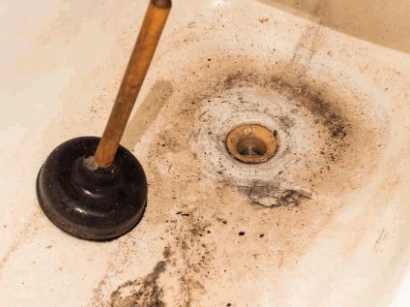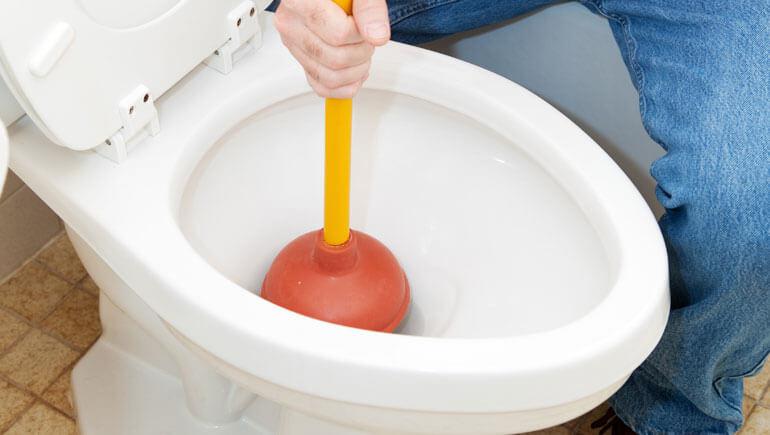Perfecting Plungers and Drain Cleaner: Expert Techniques
Perfecting Plungers and Drain Cleaner: Expert Techniques
Blog Article
Have you been trying to find advice on A Guide to Plungers (and How to Use Them)?

Intro
Appropriate upkeep of family drains is vital for stopping obstructions and making sure smooth water flow. One of the key devices in every home owner's toolkit is the bettor, together with various drainpipe cleaners designed to take on persistent clogs properly. This post explores how to make use of bettors and drain cleansers properly to maintain your drains streaming freely.
Section 1: Recognizing Plungers
Sorts of Plungers
There are several kinds of bettors offered, each made for different kinds of drains pipes and obstructs. The most typical kinds consist of cup plungers, flange plungers, and accordion bettors.
Just How Plungers Work
Bettors work with the principle of creating pressure and suction to remove blockages. When effectively used over a drainpipe, they develop a vacuum cleaner that can take out particles or separate clogs.
Picking the Right Bettor
Picking the appropriate bettor relies on the sort of drainpipe and the nature of the blockage. Cup plungers are ideal for sinks and bathtubs, while flange bettors are better suited for commodes as a result of their layout.
Usual Blunders with Plungers
Avoiding these blunders makes sure effective plunging: inappropriate seal around the drain, insufficient pressure, and not clearing bordering debris.
Area 2: Utilizing Plungers Properly
Preparation
Prior to plunging, ensure the plunger covers the drainpipe entirely and forms a limited seal. Clear any kind of noticeable debris around the drainpipe opening.
Method
Begin with gentle diving activities to construct suction. Rise pressure progressively, making use of a constant rhythm. Repeat as required until the drainpipe removes.
Troubleshooting Tips
If plunging does not function, attempt readjusting the seal, using petroleum jelly for a much better seal, or utilizing a different kind of bettor.
Section 3: Understanding Drainpipe Cleaning Company
Sorts Of Drain Cleaning Company
Drain cleaners can be chemical or chemical. Chemical cleansers make use of strong chemicals to dissolve clogs, while chemical cleaners utilize all-natural enzymes to break down raw material.
Exactly How Drain Cleaning Company Work
Chemical cleaners respond with obstructions to dissolve them, while enzymatic cleansers break down organic products like hair and grease without hurting pipes.
Safety and security Factors to consider
Always use gloves and eye security when making use of chemical drainpipe cleaners. Make sure adequate ventilation and comply with supplier instructions thoroughly.
Eco-Friendly Alternatives
Take into consideration making use of vinegar and cooking soda or enzyme-based cleaners for environmentally friendly choices that are more secure for pipes and the atmosphere.
Area 4: Using Drainpipe Cleaning Company Efficiently
Application Strategies
Pour chemical cleansers directly right into the drainpipe opening. Permit them to help the suggested time prior to flushing with hot water. Enzymatic cleansers must rest over night.
Safety measures
Stay clear of mixing various kinds of cleansers, as this can generate harmful fumes. Never use chemical cleaners along with a bettor, as spilling can occur.
Managing Persistent Blockages
For persistent blockages, take into consideration utilizing a plumbing serpent or calling a specialist plumber to stop damages to pipelines.
Verdict
To conclude, comprehending how to use bettors and drainpipe cleansers efficiently is crucial for preserving healthy plumbing systems. By selecting the right tools and methods, homeowners can deal with small blockages and avoid major plumbing issues down the line.
How to Use a Plunger to Unclog a Drain
The humble plunger is a simple yet effective tool for breaking clogs in sinks, tubs and toilets. This handy tool is easy to use. You can make the most of its power if you understand how it works. Ready to dive in? Here’s what you need to know.
Safety First!
Never use a plunger with drain chemicals. Water will splash as you work, and the chemicals can spatter, burning skin and eyes. It’s a good idea to use rubber gloves and wear safety goggles when you work on a clog.
Choose the Right Tool for the Job
Plungers come in two different styles. Sinks, bathtubs and showers require a cup plunger. Like its name suggests, the rubber end is shaped like a cup. Use a flange plunger on toilets. These plungers have a rubber funnel extending from the cup. A plunger needs to be big enough to cover the drain.
Ready, Set, Plunge!
Coat the rim: Coat the plunger rim with petroleum jelly. This helps make a better seal.
Block outlets: Hold a wet rag over nearby outlets such as the overflow vent or the drain in a second sink.
Release air: Insert the plunger at an angle into the water. Water will displace air in the cup. A water-filled cup is more forceful than one filled with air.
Keep the plunger upright: Hold the plunger perpendicular to the drain. Use fast, forceful strokes, but make the first stroke gentle. The first stroke can create a splash if the cup still contains air. Thrust the plunger 15 to 20 times.
Snap off the plunger: The final stroke should be a strong upward motion that ends when the plunger snaps off the drain.
Repeat the process: you may need to repeat this sequence several times. When the water drains away, your work is done. High-five! https://plumbernw.com/blog/how-to-use-a-plunger-to-unclog-a-drain/

Application Strategies
Pour chemical cleansers directly right into the drainpipe opening. Permit them to help the suggested time prior to flushing with hot water. Enzymatic cleansers must rest over night.
Safety measures
Stay clear of mixing various kinds of cleansers, as this can generate harmful fumes. Never use chemical cleaners along with a bettor, as spilling can occur.
Managing Persistent Blockages
For persistent blockages, take into consideration utilizing a plumbing serpent or calling a specialist plumber to stop damages to pipelines.
Verdict
To conclude, comprehending how to use bettors and drainpipe cleansers efficiently is crucial for preserving healthy plumbing systems. By selecting the right tools and methods, homeowners can deal with small blockages and avoid major plumbing issues down the line.
How to Use a Plunger to Unclog a Drain
The humble plunger is a simple yet effective tool for breaking clogs in sinks, tubs and toilets. This handy tool is easy to use. You can make the most of its power if you understand how it works. Ready to dive in? Here’s what you need to know.
Safety First!
Never use a plunger with drain chemicals. Water will splash as you work, and the chemicals can spatter, burning skin and eyes. It’s a good idea to use rubber gloves and wear safety goggles when you work on a clog.
Choose the Right Tool for the Job
Plungers come in two different styles. Sinks, bathtubs and showers require a cup plunger. Like its name suggests, the rubber end is shaped like a cup. Use a flange plunger on toilets. These plungers have a rubber funnel extending from the cup. A plunger needs to be big enough to cover the drain.
Ready, Set, Plunge!
Coat the rim: Coat the plunger rim with petroleum jelly. This helps make a better seal. Block outlets: Hold a wet rag over nearby outlets such as the overflow vent or the drain in a second sink. Release air: Insert the plunger at an angle into the water. Water will displace air in the cup. A water-filled cup is more forceful than one filled with air. Keep the plunger upright: Hold the plunger perpendicular to the drain. Use fast, forceful strokes, but make the first stroke gentle. The first stroke can create a splash if the cup still contains air. Thrust the plunger 15 to 20 times. Snap off the plunger: The final stroke should be a strong upward motion that ends when the plunger snaps off the drain. Repeat the process: you may need to repeat this sequence several times. When the water drains away, your work is done. High-five! https://plumbernw.com/blog/how-to-use-a-plunger-to-unclog-a-drain/

We are very drawn to How To Use Your Toilet Plunger Correctly in 5 Easy Steps and I hope you liked the entire piece. So long as you enjoyed reading our article if you please consider to share it. Thanks a lot for your time invested reading it.
Book Your Appointment Report this page